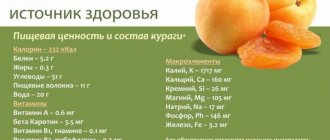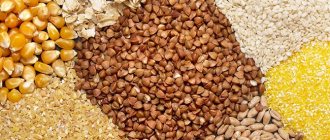Which sweetener is better
Although the complete health safety of sweeteners is still in question, many endocrinologists and experts in other fields agree that the most harmless sugar substitutes for type 2 diabetics are stevioside and sucralose.
Stevioside is obtained from sweet bifolia or stevia, which is why it is often called stevia. The plant itself has long been recognized in folk medicine and is widely used to normalize metabolic processes and reduce cholesterol and glucose levels. The beneficial compounds present in it additionally help improve immunity.
Stevioside is a powder obtained from stevia leaves. It also has a beneficial effect on the body and:
- has a positive effect on the quality of digestion;
- helps normalize blood pressure levels;
- removes harmful compounds, including cholesterol;
- inhibits natural aging processes;
- exhibits diuretic, antifungal and antimicrobial properties.
Sucralose is a chemical compound that is many times sweeter than sucrose. The starting material for its production is regular sugar. It does not change its properties under the influence of high temperatures and can be chosen for preparing any drinks, dishes, including canning, since it does not lose its sweetness throughout the year.
The norm for sucralose consumption per day is 16 mg per kg of weight. Even when taking a larger amount, no side effects occur, so, in principle, it can be exceeded, but this leads to a deterioration in the taste of the food. Sucralose is not retained in the body and is completely eliminated within 24 hours. It does not penetrate either the blood-brain or placental barriers.
However, the substance does not affect the absorption and distribution of other nutrients and insulin production. Therefore, it is absolutely safe for diabetics. The only significant drawback of these sweeteners is their high cost.
Cheap but safe sweeteners
With a limited budget, patients with compensated diabetes and prone to hypoglycemia can choose fructose. It is safe and has a sufficient level of sweetness. Traditionally, fructose is produced in the form of a snow-white powder and only partially changes its properties when heated.
Fructose is absorbed extremely slowly in the intestines and, unlike sugar, has a gentle effect on tooth enamel. Therefore, its use reduces the likelihood of damage to tooth enamel and the development of caries. But in some people it sometimes provokes flatulence.
However, when choosing fructose, be sure to regularly monitor your sugar levels using a glucometer and track its changes. Based on individual indicators, you will be able to independently regulate the permissible amount of fructose and maintain your normal condition.
Diabetics should be wary of prepared foods that contain fructose. Manufacturers do not always treat product labeling responsibly, so cases of hyperglycemia developing due to the consumption of industrially produced products with fructose are not uncommon.
Thus, the best sweeteners for diabetes are stevioside and sucralose. They not only have superior taste to sugar, but also have a high level of safety, and also have a positive effect on the entire body. The best option is to purchase and use both of these tools. But no matter how safe they are, you cannot abuse them and be negligent about the permissible daily doses.
Honey
Honey has been used since ancient times as a medicine to treat various diseases; it is widely used in traditional medicine recipes. This beekeeping product contains organic and inorganic acids, a large amount of vitamins, minerals, phytoncides and proteins. Depending on the type of honey, its composition may vary slightly, but it will not lose its healing properties. If you need to reduce the amount of sugar consumed, you should give preference to varieties with minimal sucrose content. Finding out whether it is included in the composition is quite simple - beekeeping products with a high content of sucrose after some time begin to crystallize, that is, become sugared. For diabetes of any type, such honey is strictly contraindicated. As a rule, 100 grams of honey contains approximately 327 kilocalories, the exact amount is determined by the type of product. The glycemic index of many varieties is less than 50 units. However, honey is much sweeter than white sugar, and its color can vary from light yellow to dark brown. The main thing is to know exactly which types of honey have a low glycemic index, these include the following beekeeping products:
- acacia honey – 35 units;
- honey from pine buds and shoots – 25 units;
- eucalyptus honey – 50 units;
- linden honey – 55 units.
These varieties are perfect as a substitute for sugar and will only bring benefits to the body. Each type of beekeeping product has certain positive properties, so it is advisable to alternate the use of one or another variety. Acacia honey is considered an ideal analogue of sugar; it contains a minimal amount of glucose. It has the following healing effects on the body:
- thanks to malic, lactic and citric acid, it helps improve metabolism;
- reduces blood pressure;
- increases hemoglobin levels, reducing the risk of anemia;
- acacia honey contains a minimal amount of fructose and glucose, which makes it accessible to diabetics;
- increases the body's resistance to infections and pathogenic bacteria;
- restores the body’s condition after long-term acute respiratory infections and acute respiratory viral infections, even for children under two years of age;
- Acacia honey is used to make eye drops, inhalation solutions and healing creams for burns;
- promotes vasodilation, normalizes the process of creation and development of blood.
Pine honey is known for its rich composition, which contains iron, magnesium, potassium, selenium, flavonoids, organic acids and antioxidants. Due to iron, long-term consumption of honey will serve as an excellent remedy for preventing anemia, and also stabilizes the process of hematopoiesis. Thanks to antioxidants, harmful substances are removed from the body and the aging process stops. Flavonoids fight pathogenic microflora in the intestines and stabilize the gastrointestinal tract. The high potassium content has a positive effect on the nervous system, and sleep problems disappear. The main advantage of eucalyptus honey is the destruction of pathogenic microflora on the mucous membrane of the upper respiratory tract. Doctors recommend using eucalyptus honey as a sweetener in autumn and winter, which will help effectively protect the body from viral infections. Eucalyptus honey is especially useful for diseases of the upper respiratory tract. A cup of tea with this variety will temporarily relieve inflammation and help you feel lighter.
Natural sweeteners
The carbohydrates contained in such substances are broken down very slowly, having minimal impact on blood glucose levels, which is especially important for diabetes. You are allowed to consume about 30-50 g of such sugar substitutes per day.
When this norm is exceeded, hyperglycemia usually develops or gastrointestinal upset occurs, since some sweeteners have a pronounced laxative effect.
- Xylitol. Made from cotton husks and corn cobs. Less sweet than sugar and does not change its taste when cooked. It can significantly slow down the process of removing food from the stomach, thus prolonging the feeling of fullness. This property helps patients with type 2 diabetes to lose excess weight and maintain normal body weight.
- Fructose. Contained in various berries, vegetables and fruits (fresh). Almost twice as sweet as sugar, but equal in calorie content. Since there is a slight increase in blood glucose levels after eating fructose (or products containing it), experts recommend using this sweetener in limited quantities. Small doses of fructose (up to 30 g per day) have a positive effect on the regeneration of hepatic glycogen, which is very useful in the presence of hyperglycemia.
- Sorbitol. Made from plant materials. It is a white powder, the sweetness of which, however, is not as pronounced as that of regular sugar. The main advantage of sorbitol is its slow absorption and gradual elimination from the body, due to which this sweetener does not affect blood sugar levels at all. But consuming it in quantities exceeding the recommended dose can cause nausea, diarrhea and severe abdominal pain.
- Stevia. A very tasty and healthy sugar substitute, 300 times more sweet than the usual product. It is an extract from the leaves of a plant whose name in its homeland sounds like “honey grass”. In addition to its pleasant taste, stevia can have a positive effect on health: reduce blood glucose and cholesterol levels, strengthen the immune system, improve metabolism, and slow down cell aging. This product is a high-calorie sweetener, but due to its rich taste, you need significantly less of it per day than regular sugar or other natural sweeteners. Doctors believe that this is one of the most successful sugar substitutes for diabetes.
All natural sweeteners are widely used in the production of sweet food products (wafers, cookies, biscuits, candies, gingerbreads, etc.) for patients with diabetes.
Is it possible to eat sweets with diabetes?
Diabetes is a way of life. You have to rearrange your diet, control your blood sugar, and add physical activity. To feel normal, you need to get used to the restrictions as quickly as possible. And yet, sometimes you want to give in and treat yourself to some candy or ice cream. If you have diabetes, you can eat sweets, however, in limited quantities and in certain types.
Sugar goes down instantly! Diabetes over time can lead to a whole bunch of diseases, such as problems with vision, skin and hair condition, the appearance of ulcers, gangrene and even cancerous tumors! People who have learned from bitter experience use it to normalize their sugar levels. read more.
Experienced diabetics know that they should have sugar, chocolate or candy with them at all times. This is a quick and effective remedy for hypoglycemia, but these products should not be included in the daily diet. To be able to occasionally eat sweets if you have diabetes, you need to avoid nervous tension, walk regularly, play sports, travel and get positive emotions.
Artificial sugar substitutes
Synthetic sweeteners consist of complex chemical compounds. They do not include vitamins, microelements and substances necessary for human health, as well as carbohydrates. They are created only to give food a sweet taste, but do not participate in metabolism and have no calorie content.
Creating sweeteners requires extraordinary knowledge of chemistry
The most common form of release is tablets or dragees, which do not require special storage conditions.
Insufficient data on the effects of artificial sugar substitutes on the body make them prohibited for use during pregnancy and breastfeeding, as well as before reaching 18 years of age. For diabetes, substances are used only on the recommendation of a doctor.
All synthetic sweeteners are prohibited:
- with phenylketonuria (the body’s inability to break down the amino acid phenylalanine, which comes from food containing proteins);
- for oncological diseases;
- children, as well as elderly people over 60 years of age;
- within six months after the stroke, in order to avoid a possible relapse of the disease caused by the use of sweeteners;
- for various cardiac problems and gallbladder diseases;
- during intense sports, as they can lead to dizziness and nausea.
Peptic ulcers, gastritis, and driving are reasons for careful use of sweeteners. .
Saccharin
Saccharin, the world's first artificial sweetener created in 1879, is a crystalline hydrate of sodium salt.
Food supplement:
- does not have a pronounced odor;
- 300 times sweeter than sugar and at least 50 times sweeter than other sweeteners.
According to some experts, the E954 food additive causes a risk of developing cancerous tumors. Banned in several countries. However, these conclusions have not been confirmed by clinical studies and real-world evidence.
In any case, saccharin has been most fully studied in comparison with other sweeteners and is recommended by doctors for use in limited quantities - 5 mg of the additive per 1 kg of diabetic weight.
Saccharin, like most artificial sweeteners, is available in tablets
In case of kidney failure, a health hazard is posed by a mixture of saccharin with sodium cyclamate, which is produced to eliminate the bitter taste.
Elimination of a metallic, bitter taste is possible by including the additive in dishes after heat treatment.
Sucralose
Food additive E955 is one of the least safe sweeteners. Produced by combining sucrose and chlorine molecules.
Sucralose has no aftertaste and is 600 times sweeter than sugar. The recommended dose of the supplement is 5 mg per 1 kg of diabetic weight during the day.
It is believed that the substance does not have a negative effect on the body and can be used even during pregnancy, lactation and childhood. However, there is an opinion that at the moment, research on the substance has not been carried out in full and its use can lead to the following phenomena:
- allergic reactions;
- oncological diseases;
- hormonal imbalance;
- neurological disorders;
- gastrointestinal diseases;
- decreased immunity.
Despite the safety of sucrose, its use must be treated with caution.
Aspartame
Additive E951 is a fairly popular sweetener for diabetes. It is produced as an independent product (Nutrasvit, Sladex, Slastilin) or as part of mixtures that replace sugar (Dulko, Surel).
It is a methyl ester, containing aspartic acid, phenylalanine and methanol. Exceeds the sweetness of sugar by 150 times.
It is believed that the food additive is dangerous only for phenylketonuria.
However, some experts believe that Aspartame:
- It is also not recommended for Parkinson’s disease, Alzheimer’s disease, epilepsy and brain tumors;
- can whet appetite and lead to excess weight;
- during pregnancy due to the risk of giving birth to a child with reduced intelligence;
- children may experience depression, headache, nausea, blurred vision, unsteady gait;
- when Aspartame is heated above 30º, the sweetener decomposes into toxic substances that cause loss of consciousness, joint pain, dizziness, hearing loss, seizures, and allergic rashes;
- leads to hormonal imbalance;
- increases the feeling of thirst.
All these facts do not interfere with the use of the supplement for diabetes in all countries of the world in a dosage of up to 3.5 g per day.
Today, there is a wide range of sugar substitutes for diabetics on the market. Each of them has its own advantages and contraindications. In any case, the purchase of any of them should be preceded by a consultation with a doctor.
Saccharin
Saccharin is a low-calorie substance that appears as colorless crystals, although it is available in tablet form for culinary purposes.
It is 300-500 times sweeter than sugar, contains no carbohydrates and is poorly soluble in water and alcohol. The body does not absorb saccharin and eliminates it unchanged naturally. You can consume 5 mg/kg body weight per day. In the 1970s, experiments were carried out on rats, according to which it was concluded that saccharin was harmful, since then people have argued a lot about whether it is possible to eat it, but the results of this study have now been refuted. A sugar substitute is used to make marmalade, jams, carbonated drinks, juices, jellies, baked goods and many other confectionery products. Saccharin is also widely used in pharmaceuticals. However, the sweetener does not have any nutritional benefits. Currently, saccharin is used in limited quantities, but other sweeteners are produced based on it. And mixtures are used to prepare drinks, since saccharin itself gives the product a metallic taste. Sometimes allergy or photosensitivity occurs after consuming saccharin. If you are hypersensitive to food additives, it is not recommended to use this sweetener. Saccharin satisfies the feeling of hunger well, but does not bring any benefit to the body.
Basic sweeteners
The most commonly used carbohydrate substitutes are:
- Erythritol is a polyhydric alcohol, like other substances of this class, has a sweet taste, but lacks the properties of both ethanol and sugars. Polyhydric alcohols are relatively harmless to the body. Caloric content is considered equal to zero, which is achieved due to the fact that the substance is quickly absorbed into the blood and excreted without residue through the kidneys, without being metabolized. Does not undergo fermentation in the intestines;
- Stevia is a plant of the Asteraceae family; its extract is used as a sugar substitute. Contains glycoside saccharol, which is 300 times sweeter than sugar. Very useful: kills fungi and bacteria, reduces blood pressure, is a diuretic;
- Maltitol is another polyhydric alcohol. This is a substance that is widely used as a sugar substitute not only in products for diabetics, but also in regular chewing gum, candy, etc. Less sweet than sugar. Calorie content – 210 kcal;
- Sorbitol. Also alcohol, which is obtained from glucose. The laxative effect of this substance is clearly expressed. Sorbitol can also cause flatulence. Not recommended for people suffering from chronic intestinal diseases predisposed to diarrhea. There are no other harmful effects on the body. 354 kcal;
- Mannitol , like sorbitol, is obtained by reducing glucose. It is also a sweet-tasting hexahydric alcohol. It is used as a medicine for diseases of the nervous system, high blood pressure, and kidney diseases. Side effects - hallucinations, nausea, vomiting and others. As a sweetener it is used in small doses, so there should be no side effects. 370 kcal;
- Isomalt . also isomaltite. This alcohol, which is produced from sucrose, is approximately twice as sweet as it. Stimulates intestinal function and is a laxative. It is a relatively safe alcohol and is used in various food products. Calorie content – 236 kcal. Undesirable for people prone to diarrhea;
- Thaumatin is a sweet protein obtained from plants. Contains 0 calories of energy. Virtually harmless. Various sources contain information about the effect on hormonal balance, so it is not recommended during pregnancy and breastfeeding. The effect on the body has not been fully studied;
- Fructose is an isomer of glucose. Not suitable for diabetics ;
- Aspartame is 200 times sweeter than sugar. The most common sweet flavoring additive is harmful in large quantities;
- Saccharin is not metabolized and is excreted through the kidneys. It was previously believed that saccharin causes cancer; modern medicine rejects this theory. Currently considered harmless. No energy value;
- Milford - a mixture of saccharin and sodium cyclamate;
- Sodium cyclamate is a synthetic substance, salt. Much sweeter than sugar, which allows it to be used in negligible quantities. Prohibited in early pregnancy as it can lead to congenital diseases of the fetus. Calorie content – only 20 kcal;
Combined
Combined sweeteners are a mixture of several sweet substances, which are several times sweeter than each of these substances individually.
Such mixtures are made in order to reduce the side effects of each individual sweetener by reducing the concentration. Examples of such tools:
- Sweet time (cyclamate + saccharin);
- FillDay (isomalt + sucralose);
- Tsukli - (cyclamate + saccharin).
Use combined sweeteners if you are afraid of side effects from pure ones.
The benefits and harms of sweeteners
Sugar itself does not provide any benefit to the body. If you consume it in large quantities every day, there is a risk of developing diabetes and caries, disrupting your metabolism and gaining excess weight. That is why sweeteners, unlike other additives such as preservatives, food colors and flavors, are considered healthy products that do not cause serious complications. For example, various sweeteners are often used to prepare dietary, low-calorie dishes and chewing gum, which the manufacturer presents to the buyer as a safe and healthy product. However, not all sweeteners are completely safe for health. Synthetic, that is, artificial sugar substitutes (aspartame, saccharin and suclamate) are dangerous for both healthy and sick people. Their only advantage is that they are not loaded with calories, but even this quality of these sweeteners can lead to obesity. It is better to give preference to natural sweeteners (bee products, fructose, xylitol and sorbitol). Their main disadvantage is their calorie content, so they, like all sweets, can harm your figure. In addition, some of them cause side effects if used for a long time or if the required dose is exceeded. Diseases caused by sweeteners:
- Aspartame is most often used as a sugar substitute. After consumption, the risk of dizziness, nausea, headaches, allergies, sleep problems, depression, digestive problems and palpitations increases. In addition, aspartame increases appetite.
- Saccharin – can cause tumor formation.
- Suclamate – provokes an allergic reaction.
- Xylitol and sorbitol have choleretic and laxative effects. Xylitol can cause bladder cancer, although unlike sugar it does not damage teeth.
- Fructose - destabilizes the acid-base balance.
In addition, the human body cannot fully absorb synthetic sweeteners and eliminate them in the usual way.
The best sugar substitute is stevia. It is a natural product made from the leaves of a perennial plant that is sweeter than sugar. It is worth noting that stevia is easy to grow yourself at home. The grass is rich in vitamins and various microelements that have a beneficial effect on the human body. Per 100 grams of stevia there are only 18 kilocalories, and the glycemic index does not exceed 10 units. It is stevia that promotes improved absorption of incoming glucose, thereby reducing the concentration of sugar. The sweetener rejuvenates the skin, strengthens the immune system, stabilizes high blood pressure and fights candida parasites that have entered the body. The stevia plant itself leaves an unpleasant aftertaste, so it requires special processing. In stores you may find stevia with vanilla or chocolate flavor. It is available in both tablets and powder, so it is convenient to use as powdered sugar. This sweetener is perfect for type 1 and type 2 diabetes mellitus, as well as gestational diabetes. However, the positive properties do not detract from the disadvantages of stevia. For example, some people may develop an allergy to this product, so it is advisable to gradually add it to the menu. And when combined with milk or fermented milk products, there is a risk of getting diarrhea. It is dangerous for hypotensive patients to use this herb as a sweetener, since it slightly lowers blood pressure.
What is the best natural sweetener to choose?
Fructose, sorbitol and xylitol are natural sweeteners with a fairly high calorie content. Despite the fact that, if taken in moderate dosages, they do not have pronounced harmful properties for the diabetic body, it is better to avoid them. Due to their high energy value, they can provoke the rapid development of obesity in people with type 2 diabetes. If the patient still wants to use these substances in his diet, he needs to check with the endocrinologist about their safe daily doses and take into account the caloric content when drawing up the menu. On average, the daily intake of these sweeteners ranges from 20-30 g.
Regardless of the type of sweetener, you should always start with minimal dosages. This will allow you to track the body’s reaction and prevent pronounced unpleasant symptoms in case of allergies or individual intolerances
The optimal natural sweeteners for patients with non-insulin-dependent diabetes are stevia and sucralose.
Both of these substances are considered safe for humans, and they have almost no nutritional value. To replace 100 g of sugar, only 4 g of dried stevia leaves are enough, and a person receives about 4 kcal. The calorie content of 100 g of sugar is approximately 375 kcal, so the difference is obvious. The energy levels of sucralose are approximately the same. Each of these sugar substitutes has its own advantages and disadvantages.
The most harmless sweeteners for pregnant women with gestational diabetes
Natural sweeteners (except stevioside) have a less pronounced taste than sugar.
The daily intake of natural glucose substitutes is prescribed by the doctor (usually within 35-50g). Moderate amounts of sweeteners are healthy and keep calories to a minimum.
If the daily dose is greater than the stated dose, undesirable effects such as hyperglycemia and dysfunction of the digestive system are possible. Sorbitol and xylitol have a laxative effect in overdose.
Natural sweeteners are actively used in the manufacture of special food products for diabetic patients.
About product varieties
How to replace sugar for diabetes? There is a lot of choice today. The main advantage of such a product is that when it ends up in the human body, the glucose concentration does not change. In this regard, a sugar substitute for diabetes, for example type 2, is safe; consumption of the product will not lead to hyperglycemia.
Regular sugar has a destructive effect on the walls of blood vessels, and a sugar substitute is safe for all type 2 diabetics, since nervous and cardiovascular activity does not change. If a person has diabetes, then sugar substitutes will completely replace the natural analogue, and there will be no glucose concentration in the bloodstream. It should also be noted that sugar substitutes for any diabetes mellitus actively participate in metabolic processes, but do not inhibit them. Modern industry offers 2 types of such products: calorigenic and non-calorigenic.
- natural products - these include xylitol, fructose and sorbitol. It is obtained through the heat treatment of different plants, but after such a process all individual taste qualities are preserved. When these natural sweeteners are consumed, the body produces a small amount of energy. But you must follow the dosage - the maximum amount of product should not exceed 4 grams per day. If a person is obese, then before consuming the product, consultation with a nutritionist must be mandatory, otherwise there may be serious consequences. The natural product is the most harmless for type 2 diabetes;
- artificial products - these include aspartame and saccharin. When these substances dissolve in the body, then all the energy cannot be absorbed. Such products appear synthetically; they are sweeter than ordinary glucose, so they are consumed in small quantities - this is enough to satisfy taste needs. Therefore, such products are ideal for diabetics; they do not contain calories, which is important.
Sugar in type 2 diabetes should be excluded from the diet; no problems will arise, since there are several types of sugar substitutes that will not cause any harm to the body.
Your doctor will tell you which sweetener is best after a thorough examination and taking into account the individual characteristics of the body. But natural sweeteners are safer for the human body.
Possible contraindications
Most sweeteners are contraindicated for anyone with liver disease. They are also contraindicated for allergies and stomach diseases. Some sweeteners have weak carcinogenic properties and are contraindicated for people predisposed to cancer.
Fructose is contraindicated to the same extent as sugar. since it is an isomer of glucose and is part of sugar. In the body, fructose is converted into glucose. After an insulin injection, you can consume a small amount of fructose to restore glucose levels. If there is a high concentration of carbohydrates in the blood, the use of fructose is strictly contraindicated.
Thus, sweeteners are polyhydric alcohols, glycosides and other substances that are not carbohydrates, but still have a sweet taste. These substances are broken down in the body without the participation of insulin; after their breakdown, glucose is not formed. Therefore, these substances do not affect the amount of glucose in a diabetic.
However, all sweeteners have side effects. some are carcinogenic, others cause stomach upset, and others overload the liver. Therefore, when using them, the patient needs to be careful and ensure that the desire to sweeten foods low in carbohydrates does not lead to serious complications.
Stevia and sucralose: why doctors recommend it
At the moment, there are two sweetener substitutes that have no contraindications or side effects:
- Sucralose is the safest substance of the latest generation in this regard, which is converted from the familiar sugar that goes through special processing. Thanks to it, the calorie content of the product is reduced and its ability to affect the concentration of glucose in the body is removed. Sucralose has no carcinogenic, mutagenic or nephrotoxic effects. In addition, the substance is not absorbed by the body at all and does not affect carbohydrate metabolism, so it can be used by diabetics and obese people;
- stevia is an extract from the leaves of the plant of the same name, which is also called honey herb. It has superior taste to sugar and can easily replace honey. The substance also has numerous medicinal properties: it reduces the concentration of glucose in the blood, slows down the aging process of cells and tissues, lowers cholesterol levels, and improves overall metabolism.











